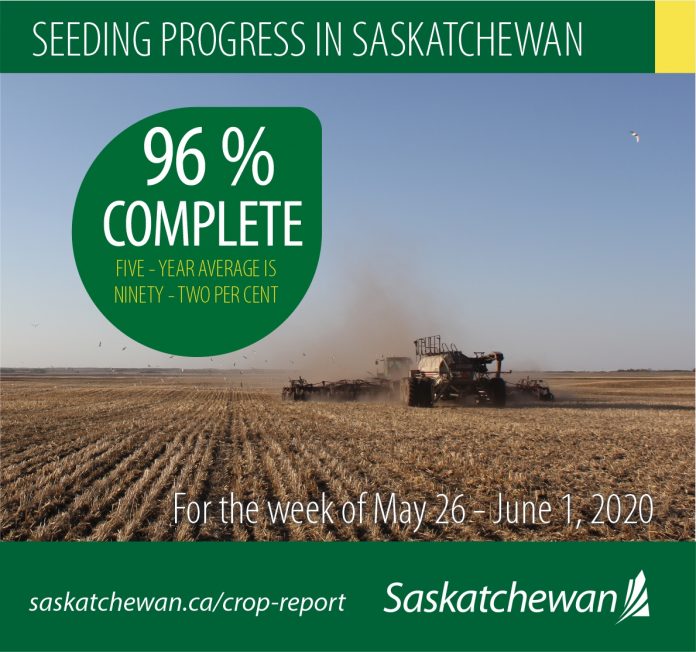Dry conditions this week allowed farmers to nearly complete seeding in all regions of the province. Ninety-six per cent of the crop is now planted, which is ahead of the five-year average of 92 per cent (2015-2019) for this time of year.
Ninety-nine per cent of the crop is seeded in the southwest region. Seeding is 97 per cent complete in the southeast and west-central regions, 95 per cent in the northwest, 94 per cent in the northeast and 93 per cent in the east-central.
Provincially, 99 per cent of field peas, mustard and chick peas, 98 per cent of durum, lentils and canary seed, 96 per cent of spring wheat, 95 per cent of canola, 94 per cent of flax, 93 per cent of barley and 88 per cent of oats have been seeded.
There was very little precipitation throughout the province this week, especially in the central and southern regions. Northern regions received small amounts of rain, with the area east of Neilburg receiving the highest amount of precipitation this week at 28 mm. Minimal precipitation and strong winds have reduced topsoil moisture conditions in the central and southern regions of the province.
Rainfall received two weeks ago has helped with pasture conditions in the western regions, but more will be needed soon.
Cropland topsoil moisture is rated as one per cent surplus, 65 per cent adequate, 30 per cent short and four per cent very short. Hay and pasture land topsoil moisture is rated as 58 per cent adequate, 32 per cent short and 10 per cent very short.
The majority of crop conditions this week are good. Smaller seed crops such as canola and mustard are rated as fair to good. This is mainly due to reduced germination caused by winds and lack of moisture as well as flea beetle pressure. In general, emergence of early-seeded crops is good and uniform, but more moisture is required to help germination of later-seeded crops and to support crop development.
Most of the crop damage this week was due to strong winds, dry soil conditions, flea beetles and light frosts in some areas of the eastern regions.
Farmers have been busy seeding, spraying herbicides, picking stones and scouting for early season insect pests.










